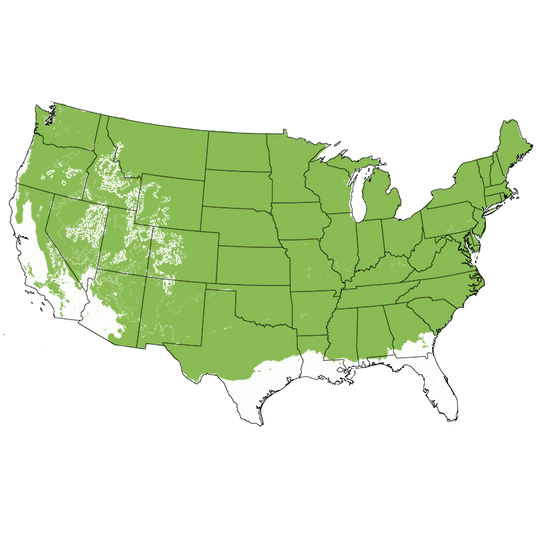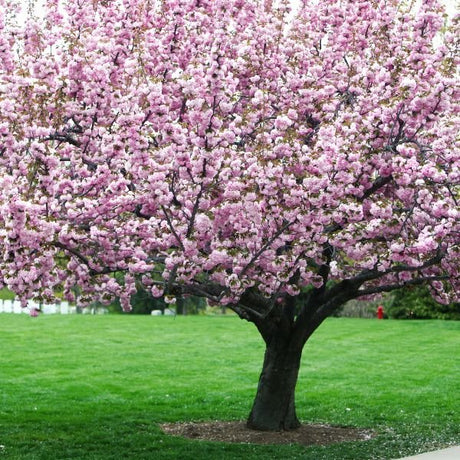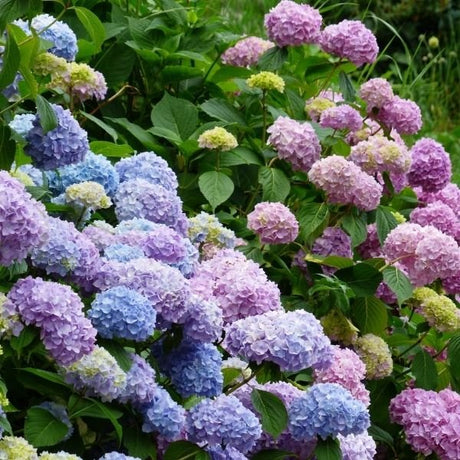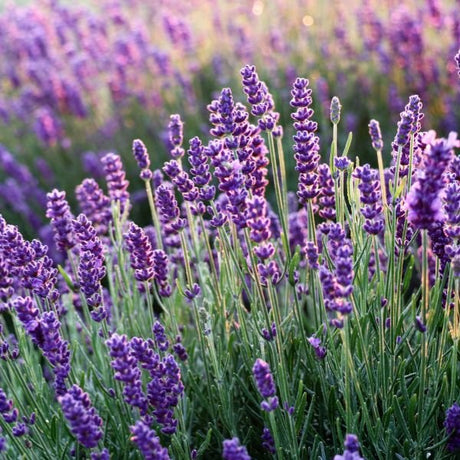Red Baron Apple Tree
Malus 'Red Baron'
- Stay Protected with Plant Sentry ™
Red Baron Apple Tree is backordered and will ship as soon as it is back in stock.
Plant Sentry™
Plant Sentry™

Plant Sentry™ Protected
Your order is protected by our compliance system that:
- Prevents restricted plants from shipping to your state
- Ensures plants meet your state's agricultural requirements
- Protects gardens from invasive pests and diseases
Delivery and Shipping
Delivery and Shipping
Delivery and Shipping
Fast, Safe Plant Delivery
Ships in 3-4 business days • Tracking provided • Weather protected
| Under $50 | $9.99 |
| $50 - $99.99 | $14.99 |
| $100 - $149.99 | $16.99 |
| $150+ | $24.99 |
✓ Zone-specific timing • ✓ Professional packaging • ✓ Health guarantee
Understanding Plant Options
Nature Hills offers plants in two main formats:
- Container Plants: Grown in pots with soil, sized by container volume and plant age
- Bare Root Plants: Dormant plants without soil, sized by height measurements
Container Plant Sizes
Container sizes indicate plant age and growing capacity rather than liquid volume equivalents. Our containers follow industry-standard nursery "trade gallon" specifications, which differ from standard liquid gallon measurements.
Young Plants (6 months to 18 months old)
| Container Size | Actual Volume | Metric Equivalent |
|---|---|---|
| 2" x 2" x 3" | 0.18 - 0.21 dry quarts | 0.20 - 0.23 dry liters |
| 4" Container | 0.31 - 0.87 dry quarts | 0.35 - 0.96 dry liters |
| 4.5" Container | 0.65 dry quarts | 0.72 dry liters |
| 6" Container | 1.4 dry quarts | 1.59 dry liters |
| 1 Quart | 1 dry quart | 1.1 dry liters |
| 5.5" Container | 1.89 dry quarts | 2.08 dry liters |
Established Plants (18 months to 2.5 years old)
| Container Size | Actual Volume | Metric Equivalent |
|---|---|---|
| 2 Quart | 2 dry quarts | 2.2 dry liters |
| #1 Container | 2.26 - 3.73 dry quarts | 2.49 - 4.11 dry liters |
| 5" x 5" x 12" | 3.5 - 4.3 dry quarts | 3.85 - 4.74 dry liters |
Mature Plants (2-4 years old)
| Container Size | Actual Volume | Metric Equivalent |
|---|---|---|
| #2 Container | 1.19 - 1.76 dry gallons | 5.24 - 7.75 dry liters |
| #3 Container | 2.15 - 2.76 dry gallons | 8.14 - 12.16 dry liters |
Large Plants (3-5 years old)
| Container Size | Actual Volume | Metric Equivalent |
|---|---|---|
| #5 Container | 2.92 - 4.62 dry gallons | 12.86 - 20.35 dry liters |
| #6 Container | 5.25 - 6.01 dry gallons | 23.12 - 26.42 dry liters |
| #7 Container | 5.98 - 6.53 dry gallons | 26.34 - 28.76 dry liters |
Bare Root Plants
Bare root plants are sold by height from the root system to the top of the plant. Plants may exceed minimum height requirements.
Common Sizes:
- Trees: 1 foot, 2 feet, 3 feet, 4 feet, 5 feet, 6 feet
- Shrubs & Perennials: 1 foot, 18 inches, 2 feet
Important Notes
Container Volume Specifications
- Trade Gallon Standard: Our containers follow industry-standard "trade gallon" specifications established by the American National Standards Institute (ANSI Z60.1) for nursery stock
- Volume Variations: Actual soil volume may vary due to plant root systems and growing medium settlement
- Age Indicators: Container size primarily indicates plant age and maturity rather than liquid volume equivalents
Growing Conditions
- Plant size can vary based on variety and growing conditions
- Container size helps indicate plant maturity and establishment level
- Larger containers generally mean more established root systems and faster landscape establishment
Seasonal Availability
- Bare root plants are available seasonally when dormant
- Container plants are available throughout the growing season
- Specific varieties may have limited availability in certain sizes
Questions?
For questions about specific plant sizes or availability, please contact our plant experts who can help you choose the right size for your landscape needs.
Plant Highlights
Red Baron Apple Tree highlights at a glance!
-
Brand
-
Botanical Name
-
Growing Zones3, 4, 5, 6, 7, 8
-
Mature Height
-
Mature Spread
-
Sun ExposureFull Sun
-
Moisture
-
Soil
-
Growth RateMedium
-
Flower Color
-
Pollinator Required
-
Pruning Time
-
Bloom PeriodEarly Spring, Late Spring

Growing Zones
This medium-sized, red and yellow Apple has a great mild, fresh, crispy, sweet taste that you'll love! The tree that grows these delectable fruits is amazing, too! The Red Baron Apple Tree (Malus 'Red Baron') will quickly grow to become a hardy, precocious-bearing fruiting tree for your home orchard! The flavorful fruit is prized for fresh eating, pies, and sauces!
In the spring, cute white flowers with a sweet fragrance bloom. Buzzing bees and other happy pollinators love to spend time by those flowers. Once they've done their duties, the lush green leaves take over and fill out this mid-sized fruit tree to provide a cooling shade. Then you get to harvest the fruits of your labor by the middle of September for best taste! They store for about 4-5 weeks and are harvestable at the perfect time for Apple pie!
Not to be confused with the Red Barron Crabapple, the Red Baron Apple Tree grows anywhere from 18-25 feet tall and spreads 15-18 feet wide. This tree is hardy and fire blight-resistant! Hardy throughout chilly USDA growing zones 3 through balmy zone 8 with incredible adaptability! Need to find your hardiness zone? Use our Plant Hardiness Map to locate yours!
Planting and Application:
The Red Baron Apple tree is a great size for many different uses! The possibilities never end! Small to large properties can enjoy this tree and still have room for Red Baron's pollinator tree too! Try creating naturalized groupings, orchards, and backyard food forests!
Or create a linear orchard by planting hedgerows for wildlife and edible landscaping that doubles as property definition and privacy hedges! We're sure those nosy neighbors won't mind as long as you don't mind a few missing fruits on their side of this friendly fence!
No room? Try a high-density planting technique, create an Espalier tree, or prune your Apple tree smaller to accommodate even the smallest of sunny properties! When grown to full size, Red Baron is a fantastic little shade tree or ornamental flowering and fruiting accent for both front and back gardens!
- Red & Yellow Round Fruit
- Sweet, Mild & Crisp - Versatile Uses in the Kitchen
- White Fragrant Flowers
- Lush Foliage & Disease-Resistance
- Great Mid-Sized Fruiting Ornamental, Shade & Edible Landscaping
#ProPlantTips for Care:
The Red Baron Apple Tree is fairly easy to take care of and is a great beginner Fruit Tree! Make sure your new tree is in a full sun location for the best possible growth. All fruit trees thrive on the sun. Water this tree regularly like any other plant. This tree should be planted in well-drained soil. If the soil near the base of the tree is moist, then this tree is happy! If it is dry, give it a good soak.
Trim off any broken branches from delivery as soon as you take them out of the box. Prune and trim Apple trees while dormant, in late winter or early spring, before you see new growth.
How to Prune Red Baron Apple Trees
Dormant prune to:
- Remove any double leaders or narrow crotch angles
- Eliminate any crossing branches
- Thin interior branching and leave the fruiting spurs and strong branches in place opening up the canopy
- Branching at least 24-36 inches above the ground
Prune Apple trees in the summer to:
- Control size and shape by reducing the length of longer new growth on vigorous trees
- Remove water sprouts on the main trunk or older branches in the crown
- Remove suckers at the base of the trunk
- Thin fruit during heavy years on established trees
Top off with a 3-4 inch thick layer of Arborist mulch. Consider staking your tree to keep its trunk growing straight for the first year to ensure it stands tall against strong winds and drifting snow.
- Full Sun
- Enriched Well-Drained Soil
- Regular Moisture Needs
- Appreciates Mulched Beds
- See Fruit Tree Pruning Tips In Our Garden Blog
- Blight & Disease-Resistant!
- ~300 Chill Hours
With delicious fruit and ease of care, the Red Baron Apple Tree will be a fast favorite for both new and experienced growers alike! Hurry and order this great variety for your orchard today from Nature Hills Nursery!
Red Baron Apple Tree Frequently Asked Questions
When to Plant Red Baron Apple Trees
Planting Bareroot trees as soon as you can dig a hole in spring and until hot weather, the earlier the better. Plant container Apple trees throughout the growing season with complete success - that is the benefit of container plants - to extend the planting season. Your County Agricultural Extension Office is a great resource for first and last frost dates in your area.
How to Plant Red Baron Apple Trees
Dig a large hole only as deep as needed to accommodate the bareroot or container root ball, and twice as wide. Add Nature Hills Root Booster to speed root establishment.
Remove the pot or bag and situate it into the hole so the top of the soil (soil line if bareroot), is level with the new location's soil being careful not to plant too deep. Water in again very well and backfill with the same soil you dug up, tamping down gently to ensure there are no air pockets.
How to Care for Red Baron Apple Trees
Growing an Apple tree is easy when proper soil, good drainage, attention to moisture, and regular fertility are maintained. Once you've chosen an apple tree that works for your climate, in the size you need for your landscape, and its pollinator (if needed), then you've accomplished half the battle!
- Apple trees do best in full sun and well-drained soil
- Water your Apple trees when they get dry - especially during the fruit production stage, and drought periods to keep them stress-free
- Use arborists' wood chips to mulch over the roots of your Apples
Have your soil tested to see what your soil may be lacking before adding fertilizers. - Apple trees will tolerate a wide range of soils, so long as water and nutrients are not limited and the pH level is adequate.
- Maintenance pruning and shaping
How to Fertilize Red Baron Apple Trees
For the first year, water alone is most important. It is always best to get a soil test to see what your soil is lacking before adding more fertilizers. Once established, a fertilizer routine may be beneficial. We do offer some excellent slow-release organic options, applied according to the package directions.
Fruit trees need more phosphate and it's possible to apply too much nitrogen which affects the soil's pH. Test soil acidity or alkalinity using a pH Tester.
Fertilize in spring when you first see new growth emerging.
- Don't overdo it
- Phosphates are your friends
- Pay attention to pH in areas with extremely high or low soil pH
- Follow the directions on the package
Red Baron Apple Tree Pollinating Info
Red Baron is not self-fruiting and needs a pollinating partner. Pair with one of these varieties:
- Fireside Apple Tree
- Frostbite™ Apple Tree
- Honeycrisp Apple Tree
Harvest Times for Red Baron Apple Trees
Red Baron Apples are typically ready to harvest in September.
Early-Season? Mid-Season? Late-Season?
The terminology can be confusing for new apple tree growers. Weather, climate, and your tree will ultimately determine when it's ripe.
For Apples:
- Early-season is usually June-July
- Mid-season can be August-September
- Late-season can be from late September-November
The growing season consists of spring, summer, and fall, and varies with climate and weather. Areas with longer growing seasons in the warmer hardiness zones can greatly affect the harvest times for each particular apple variety grown in your area.





